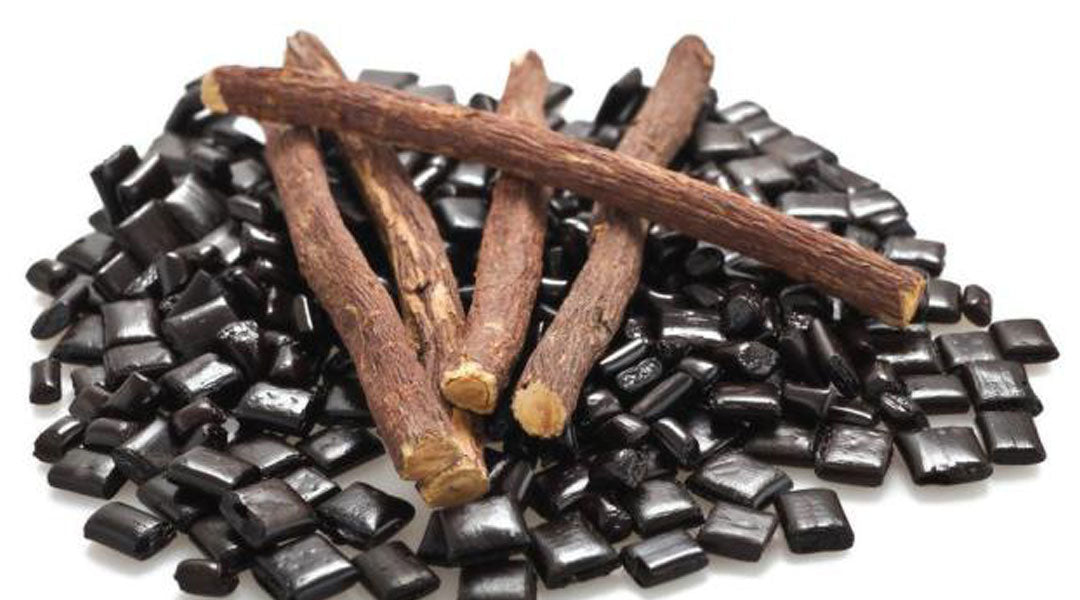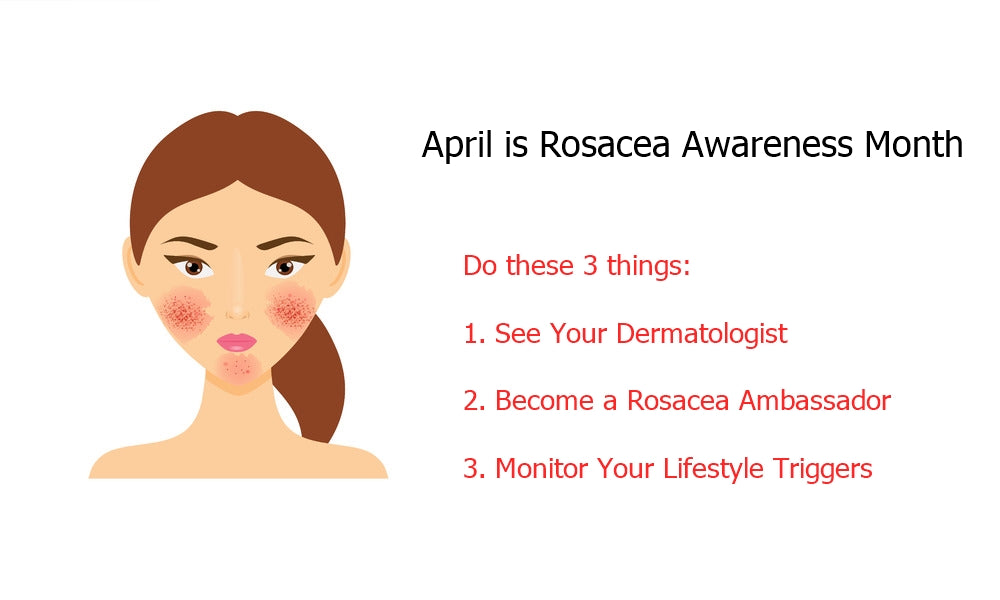Blog
Anti-Inflammatory Skin Care Ingredients
In this post let’s focus on anti-inflammatory skin care ingredients following our last article on skin inflammation, what causes it and how to treat it. If your skin exhibits acne breakouts, redness or other types of discomfort, it’s sending a message that something is irritating it. Whether it’s UV exposure, allergens or something in your skin care regimen that’s throwing things off, the best thing to do is identify and eliminate the offending agent if you can. Decisive action can help to nip things in the bud before setting off an inflammatory cascade that may turn into something longer lasting that will damage skin. Corticosteroids are potent anti-inflammatory skin care ingredients available by prescription that are used to treat eczema and dermatitis. You’ll get fast results but for the most part, you shouldn’t use corticosteroids long term as they can thin skin and dampen the immune system. Lots of non-prescription anti-inflammatory skin care options are available today and they are available in a range of treatments to help all skin types. 7 Anti-Inflammatory Skin Care Ingredients Whether you need to repair or want to lessen the chances of inflammation starting in the first place, here are seven ingredients that should be on your radar: Niacinamide. Niacinamide is one of those under-valued ingredients that does so much for skin. In addition to its inflammation busting properties, it has been shown to stimulate collagen production, prevents moisture loss, increase ceramide (lipid) production and even the skin tone. Find it in our A is for Anti-Aging Serum, where it’s combined with retinaldehyde and a host of other ingredients to help deliver more youthful and vibrant skin. Chamomile. Rich in bisabolol, an anti-irritant that naturally occurs in chamomile, this herb’s healing properties help to soothe redness and rosacea and repair damaged skin. Find it in our A is for Anti-Aging Retinal Serum. Turmeric. This beautiful golden hued spice is gaining lots of attention due to its anti-inflammatory compounds, including curcumin. When ingested orally, the active components in turmeric are useful in managing arthritis. Skin care preparations that include turmeric calm and soothe skin and help to brighten the skin tone. Blue Tansy. The blue colour comes from azulene, which has anti-inflammatory properties and is helpful in battling cystic and hormonal acne. White Willow Bark. Rich in inflammation fighting compounds known as flavonoids, white willow bark has anti-inflammatory and pain relieving abilities comparable to aspirin. It is a useful addition in the battle against acne breakouts. Green Tea. Sipping on a cup of green tea provides instant zen and this vibe transfers over to skin when applied topically. Green tea is a source of epigallocatechin gallate (EGCG), a polyphenol in that delivers both antioxidant and anti-inflammatory skin care properties and is known to protect against UV damage. Find green tea extract in our Bespoke Vitamin C Serum. Licorice. Whether from the root or as an extract, licorice has been used in ancient Chinese medicine to treat inflammation for centuries. This heavy-hitter is a boon to sensitive skin prone to irritation. What are your favourite anti-inflammatory skin care ingredients?
Learn moreUnderstanding Skin Inflammation
Skin inflammation is one of the most common issues experienced when it comes to our body’s largest organ. The condition may be acute (short lived) or chronic (longer lasting). Under ideal circumstances, inflammation is actually a good thing as it’s our built in defense system, designed to protect us from invading bacteria, viruses and injuries. However, left untreated over a long time period, it can cause problems. Shop All Apothekari Acute skin inflammation results from exposure to UV rays, allergens or contact with potentially irritating ingredients like soaps and other topical treatments. Inflamed skin may have a rash, and be itchy and/or red. Symptoms tend to resolve spontaneously within a couple of weeks, especially if the irritant is removed. For the most part, acute conditions leave no serious damage behind. Chronic skin inflammation is often the result of an immune inflammatory response within the skin itself. Presenting as acne, eczema, rosacea, dermatitis and psoriasis, it tends to be longer lasting and may cause significant and sometimes serious tissue damage. Acne is an inflammatory condition, often exacerbated by the presence of bacteria. Finally, rosacea is another skin condition often triggered by inflammation from stress, food or hormones. What Causes Skin Inflammation? Skin inflammation is a complex process and researchers are still trying to understand it in full. In general, a trigger results in the production of inflammatory hormones (like cortisol), which bind to receptors on target cells and stimulate the production of further inflammatory signaling hormones. Lifestyle factors including stress, lack of sleep, poor diet, second hand smoke and sun exposure can all contribute to skin inflammation. Blood vessels may dilate, nerve cells may be activated, and some cells may leave the blood and migrate to the skin, where more inflammatory hormones along with enzymes, free radicals and damaging chemicals are produced. While the response arises as a way to protect the body against a perceived threat from the initial trigger, the end result is a large inflammatory response that can actually cause considerable damage to the skin. Treatment Conventional treatments for chronic inflammation such as eczema and dermatitis often include corticosteroids. While effective in chronic cases, corticosteroids aren’t that great in treating acute inflammation. Managing lifestyle factors – watching what you eat, getting enough sleep and trying to control stress are key. Cortisol, the stress hormone slows wound healing, hastens the breakdown of collagen and can accelerate the aging progress, leaving skin looking saggy, wrinkled and less vibrant. Exercise boosts the release of endorphins, which are anti-inflammatory. Last, sleep gives your skin a chance to heal and repair. It’s not called ‘beauty sleep for nothing! Here are 5 ways you can help fight against skin inflammation: 1. Consume Foods Rich in Anti-inflammatory Compounds This includes foods rich in omega-3 fatty acids (like fish), antioxidant rich berries, nuts and leafy greens. 2. Minimize the Consumption of Junk Food Fast food, refined carbohydrates and sugar contribute to inflammation. Food allergies may also play a factor so if you suspect your diet is the cause try to identify the allergen and eliminate it. It’s definitely worth a try! 3. Be Gentle When it comes to topical treatments, go easy. Opt for gentle cleansers (like Cloud Nine Foaming Cleansing Crème or AHA-Mazing Clean Cleanser). Don’t over exfoliate or combine the use of aggressive products all at once. Space out retinoids, alpha hydroxy acids and low pH Vitamin C. Rethink feeling ‘squeaky clean’, which often results in dry and irritated skin. If skin feels itchy and irritated or appears red, take a product break. 4. Wear Sunscreen Every day. UV rays are a source of free radicals, which can lead to inflammation. 5. Sleep Well. Exercise. Manage Stress. Since stress is one of the main reasons for skin inflammation, stress reduction is key. Exercising and sleeping better are two ways to help manage stress. Whether it’s short-term inflammation (like hives, a rash or sunburn) or the cumulative effect of chronic assaults, inflammation does take a toll on the skin. A weakened skin barrier function can lead to trans-epidermal water loss, leaving skin feeling dry and more sensitive. The earlier you tackle it the better. In our next post, we discuss some of the best anti-inflammatory ingredients you can use to help skin heal. Stay tuned!
Learn moreApril is Rosacea Awareness Month
Rosacea is a condition that affects more than 16 million Americans and many more worldwide. The National Rosacea Society (NRS) has designated April as Rosacea Awareness Month to educate the public on the warning signs of this chronic but treatable facial disorder. Shop Daily Infusion Moisturizer What is Rosacea? Individuals are first typically afflicted any time after age 30. Symptoms may initially resemble a simple sunburn or an inexplicable blush. Without warning, the flush may suddenly come to the cheeks, nose, chin or forehead. Just when concerns starts to build, the redness disappears. Unfortunately, the symptoms appear again and again, with each episode becoming more symptomatic – more redness – and lasting longer each time. Eventually, visible blood vessels may appear. Without treatment, individuals may develop bumps and pimples, which grow more extensive over time, bringing with them burning, itching and stinging. In severe cases, especially in men, the nose may become enlarged from the development of excess tissue. In some people the eyes are also affected, feeling irritated and appearing watery or bloodshot. Although it’s still not clear what causes rosacea, ongoing research has suggested that it may be a result of several factors including the immune system, the nervous system, facial blood vessels and genetics, as well as the presence of microbes and Demodex mites on the skin. Ongoing medical research may lead to advances in its treatment and potential prevention or cure. If you suffer with rosacea, take heart as there is an expanding range of treatment options for its many potential signs and symptoms. 3 Things You Can do This Month The NRS recommends doing these 3 things in April: 1. See Your Dermatologist Many rosacea patients had never heard of rosacea prior to their diagnosis. According to the NRS, 95 percent said they had known little or nothing about its signs and symptoms and 90 percent said its effect on their personal appearance lowered their self-esteem and self-confidence. Springtime is referred to by many doctors as “rosacea season” due to the change in weather causing flare-ups in many sufferers. Now’s the time to see a medical professional for proper diagnosis and treatment. 2. Become a Rosacea Ambassador Rosacea is not a result of overindulgence in alcohol or bad hygiene, yet these and other myths persist. If you have rosacea, take the opportunity to talk about your skin and educate others on the disorder. 3. Monitor Your Lifestyle Triggers Common triggers for rosacea include UV exposure, emotional stress, spicy food, alcohol, gluten and sugars. How To Control Rosacea It’s important to be aware about what you put on your face so that you can avoid harsh ingredients and triggers. These 4 guidelines can help: Read labels to avoid common triggers which include alcohol, witch hazel, fragrance, menthol, peppermint and eucalyptus oil. Astringents and exfoliating agents may also be too harsh for your skin. Choose fragrance-free skin-care and makeup products. According to the American Academy of Dermatology, “Fragrances cause more allergic contact dermatitis than any other ingredient.” Do A Patch Test First. Before applying a product on your face, try it on a patch of skin in a nearby area, such as the neck. Avoid the product and note its ingredients if you react. Rosacea irritants may vary from person to person, so let your skin’s reaction be your guide. Use minimal products. Consider reducing the number of items you use on their skin by choosing products with multiple functions. By understanding your triggers and attempting to limit and/or avoid them, you can help to reduce flare-ups. Other strategies include exercising regularly, eliminating processed food and optimizing your Vitamin D levels. Medical treatments are also available and you should consult with your doctor to find out if one is right for you. At Apothekari Skincare, we avoid ingredients that are problematic for skin. Our line is free from – parabens, formaldehyde, SLS/SLES, phthalates, synthetic fragrances and colorants – ingredients which are common triggers for rosacea. Daily Infusion Moisturizer. This light treatment not only hydrates and plumps skin but also provides anti-aging benefits, protects against bacteria and leaves your skin feeling refreshed. Designed specifically for sensitive skin making it ideal for individuals with rosacea.
Learn more



